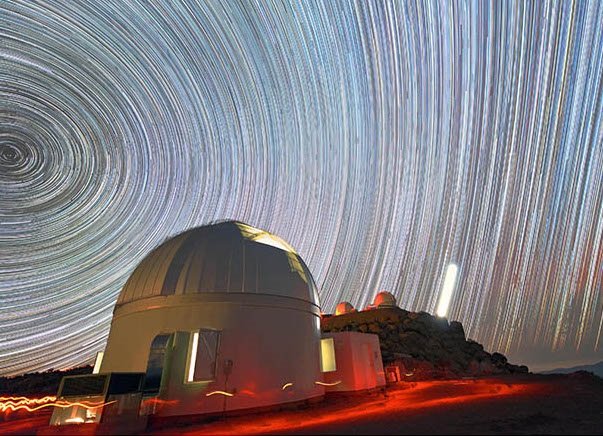
The path of a light beam is bent by the presence of mass, and a massive body can therefore act like a lens (a “gravitational lens”) to distort the image of an object seen behind it.
Scientists first confirmed Einstein’s prediction quantitatively during the now famous total eclipse of 29 May 1919 by observing starlight bent by the mass of the Sun.
Microlensing is the name given to a related phenomenon: the brightening of light from a star as a cosmic body, acting as a gravitational lens, passing fortuitously in front of it, the light then dimming to normal as the body moves beyond the line-of sight.
About one hundred exoplanets have been discovered to date by the microlensing technique, ranging in masses from about fifty Jupiter-masses to less than a few Earth-masses.
The Korea Microlensing Telescope Network (KMTNet) was inaugurated over four years ago with three 1.6-meter telescopes located in Chile, South Africa, and Australia.
Its goal is to discover exoplanets through microlensing brightening events using constant monitoring of selected regions of the sky.
Depending on the timing cadence used for the observations, from four per hour to once every five hours, KMTNet should be able to detect and characterize planets whose masses are respectively from about one Earth-mass to one Jupiter-mass.
CfA astronomers In-Gu Shin and Jennifer Yee were members of a KMTNet microlensing team that used microlensing techniques to discover a Jupiter-sized exoplanet (its mass is about 0.57 Jupiter-masses) orbiting a small M-dwarf star (mass of about 0.14 solar- masses) located about four thousand light-years away.
In the past, most exoplanets dicoveries by microlensing were made by intensive follow-up observations of microlensing events first spotted in large sky surveys as a variation in a star’s light.
The constant monitoring of a field means that both the discovery and followups are done with the same telescopes.
This is the thirty-third exoplanet discovered by KMTNet, and in addition to confirming the utility of modest-sized telescopes and the team’s cadence strategy for observations, its discovery shows that the statistics on this population of exoplanets are rapidly improving, and they are expected to lead to a better understanding of how gas giants form and evolve.



